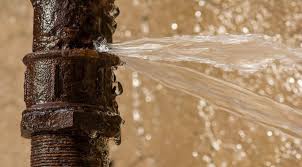A leaking faucet is not just an annoyance; it can also lead to higher water bills and potential water damage if left unchecked. Whether it’s a slow drip or a steady stream, knowing how to fix a faucet leak can save you time and money. In this guide, we’ll walk you through the steps to identify and repair common faucet leaks.Before you begin, gather the necessary tools and materials. You’ll likely need:
- Adjustable wrench
- Screwdrivers (flathead and Phillips)
- Replacement washers or O-rings
- Plumber’s tape
- Bucket or towel to catch water
Now, let’s dive into the step-by-step process to fix your faucet leak.
- Turn Off the Water Supply: Locate the shut-off valves under the sink and turn them clockwise to stop the water flow. If there are no individual valves, you may need to shut off the main water supply.
- Plug the Drain: Place a towel or stopper in the sink to prevent small parts from falling down the drain.
- Disassemble the Faucet: Use a screwdriver to remove the handle, then unscrew the packing nut with an adjustable wrench. Carefully lift out the stem assembly.
- Inspect the Washer and O-Ring: These are common culprits for leaks. If they appear worn or damaged, replace them with new ones of the same size.
- Reassemble the Faucet: Put the stem assembly back in place, secure the packing nut, and reattach the handle. Wrap plumber’s tape around threaded connections for a tighter seal.
- Turn the Water Back On: Slowly open the shut-off valves and test the faucet for leaks. If the leak persists, you may need to repeat the process or consult a professional.
Preventing future leaks is just as important as fixing them. Here are some tips to keep your faucet in good condition:
- Avoid overtightening handles, as this can wear out washers faster.
- Clean aerators regularly to prevent mineral buildup.
- Check for leaks periodically and address them promptly.
If you’re dealing with a more complex issue, such as a leak in the faucet body or pipes, it may be best to call a licensed plumber. However, for most minor leaks, following these steps should help you resolve the problem efficiently.Fixing a faucet leak is a manageable DIY task that can prevent wasted water and costly repairs down the line. With the right tools and a little patience, you can tackle this project confidently and enjoy a drip-free faucet once again.

